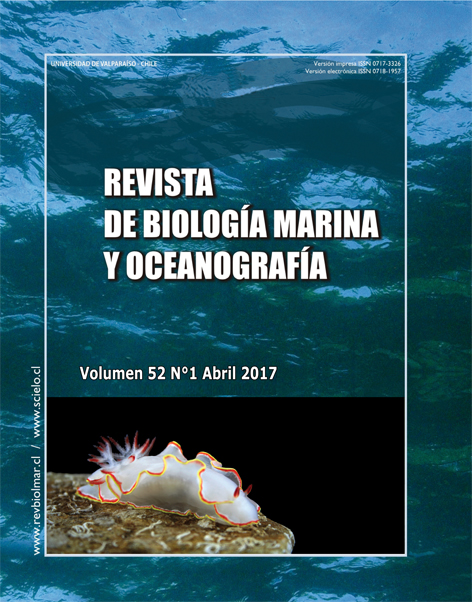B-glucans, production and properties in microalgae with emphasis on Nannochloropsis genus (Ochrophyta, Eustigmatales)
DOI:
https://doi.org/10.4067/S0718-19572017000100003Keywords:
Microalgae, nutraceutics, B-glucans, NannochloropsisAbstract
Microalgae are photosynthetic eukariotic microorganisms capable of producing a wide range of compounds of commercial interest, such as vitamins, antioxidants, omega-3 fatty acids, and immunostimulants like B-glucans. B-glucans are Dglucose polymers linked by B -1,3 and/or B-1,4 bonds, which can present branches of B-1,6 bonds. The most well known in microalgae are the paramylon (in euglenoids) and the chrysolaminarin (in diatoms). In the genus Nannochloropsis, (Ochrophyta), the genome and transcriptome sequencing of species has shown that they are also likely to be able to synthesize B-glucans with B-1,3 bonds with B-1,6 side branches. There are few studies about these B-glucans in those species but it is suggested that they are carbon/energy-storage molecules that replace starch and perform similarly to storage lipids such as triacylglycerol (TAG), competing for the same precursor molecules produced by the carbon fixation. The presence of B-glucans, along with characterizing them and confirming their beneficial properties for human health, could grant a high potential to the culture of Nannochloropsis with commercial purposes. These cultures have already gained great interest because of their high contents of TAG used to produce biodiesel or eicosapentanoic acid (EPA) to feed rotifers, fish or for nutraceutical purposes in humans. The objective of this review is to describe the properties of B-glucans in microalgae and the potential use of Nannochloropsis in the production of these molecules.
Downloads
Published
How to Cite
Issue
Section
License
• Los autores que publican en la RBMO transfieren sus derechos de publicación a la Universidad de Valparaíso, conservando los derechos de propiedad intelectual para difundir ampliamente el artículo y la revista en cualquier formato.
• La RBMO autoriza el uso de figuras, tablas y extractos breves de su colección de manuscritos, en trabajos científicos y educacionales, siempre que se incluya la fuente de información.





